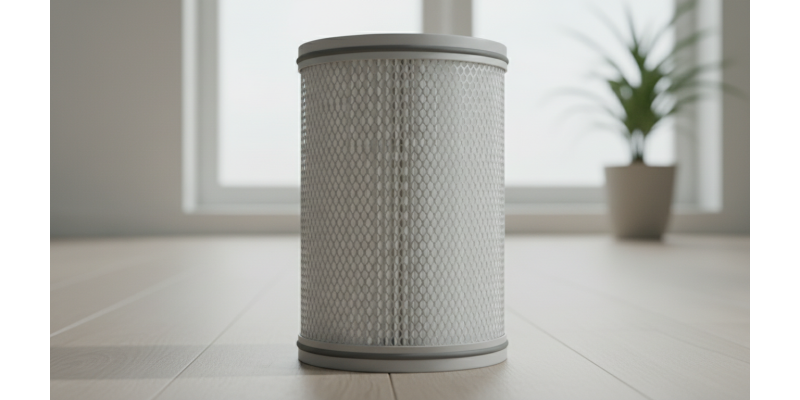Introduction
HEPA filters are a key component in industrial air purification systems, known for their ability to capture ultrafine particles, including dust, allergens, smoke, and even microorganisms. Their use is essential in sectors where air quality is strictly regulated, such as pharmaceuticals, electronics, and heavy industry. This article explains how HEPA filters work, their classification standards, and their application within industrial environments. It also examines their effectiveness in removing airborne contaminants and supporting compliance with health and safety regulations.
How HEPA Filters Work
A HEPA filter (High Efficiency Particulate Air) is designed to capture at least 99.97% of airborne particles with a diameter of 0.3 microns. This efficiency is achieved through a dense network of glass microfibers arranged to intercept particles through three primary mechanisms:
-
Interception – Particles following the airflow path are captured when they come into contact with the fibers.
-
Impaction – Larger particles deviate from the airflow stream and collide with the fibers.
-
Diffusion – Ultrafine particles, especially below 0.1 microns, move erratically due to Brownian motion and become trapped within the filter matrix.
These combined processes explain how HEPA filters work and why they remain effective across a wide range of particle sizes, including contaminants smaller than the filtration threshold.
HEPA Classification Standards
Industrial HEPA filters are classified according to internationally recognized standards, primarily EN 1822 and ISO 29463. These categories define filtration efficiency and typical performance values:
-
H13 – ≥ 99.95% particle retention
-
H14 – ≥ 99.995% particle retention
-
U15–U17 – Ultrafine filtration levels for environments requiring stringent contamination control
Such classifications ensure that industrial HEPA filters maintain reliable and measurable performance over time.
Applications in Industrial Environments
Industrial HEPA vacuum systems, cleanroom equipment, and air handling units rely heavily on HEPA technology to ensure proper airborne contaminant control. Common applications include:
-
Pharmaceutical production – Protection against biological contaminants and particulate impurities.
-
Electronics manufacturing – Prevention of particle-sensitive component failures.
-
Heavy industry and metalworking – Reduction of dust, fumes, and smoke in processing zones.
-
Food production – Ensuring compliance with hygiene and safety standards.
When integrated into industrial HEPA vacuum equipment or centralized filtration units, HEPA filters significantly improve workplace air quality and reduce the risk of contamination.
Can HEPA Filters Remove Smoke?
Yes, HEPA filters can remove smoke particles, as smoke consists largely of ultrafine particulate matter. However, HEPA filters capture solid particles, not gaseous pollutants. For industrial environments with exposure to chemical fumes or volatile organic compounds, HEPA filtration is typically combined with activated carbon or other gas-phase filtration systems.
Conclusion
HEPA filters play a fundamental role in industrial air purification by ensuring high-efficiency particle removal and supporting compliance with strict regulatory standards. Their ability to trap fine dust, allergens, microorganisms, and smoke particles makes them indispensable for industries where controlled air quality is essential.

 Deutsch
Deutsch Francais
Francais Italiano
Italiano
